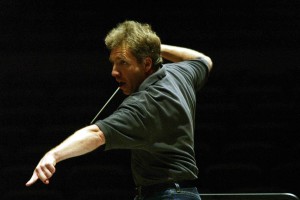UTAH SYMPHONY, Abravanel Hall, Nov. 14; second performance 8 p.m. Nov. 15, tickets at 801-355-2787, 888-451-2787 or www.utahsymphony.org
It isn’t really all that odd that during Gustav Mahler’s life only a few of his symphonies were played and none were understood. Mahler created his own world in these large scale works, and he unequivocally broke the mold of what a symphony is supposed to be. It’s true that Ludwig van Beethoven introduced solo singers and a chorus into his Ninth Symphony and that Anton Bruckner wrote gigantic symphonic works in the 1880s and ‘90s. But with Mahler the musical language is broader and much more expansive; the symphonic structure is greatly expanded; and there is a multitude of different musical ideas at play in each work — everything from sentimental Viennese Ländler to military bands to lofty expressions of philosophical concepts. For the audience of the day there was nothing to grasp on to.
With today’s ears, attuned as they are to a host of musical experiences, Mahler’s music isn’t so foreign or incomprehensible. It can be better appreciated for what it is — a vast new landscape of musical sounds and ideas that is at once personal and universal.
Mahler and the Utah Symphony are closely connected thanks to Maurice Abravanel, the orchestra’s music director from 1947-1979, whose recordings of the Austrian composer’s nine symphonies in the 1960s and ‘70s marked the first time that these works were recorded by the same orchestra and conductor.
To help celebrate the Utah Symphony’s 75th anniversary and keep Abravanel’s legacy alive, music director Thierry Fischer has undertaken a two-season-long project to perform the complete Mahler cycle. The First was played (and recorded) in September. The Second (Resurrection) is on this weekend’s program.
Friday’s performance featured some of the best playing to date by the Utah Symphony under Fischer’s direction. Fischer has high expectations of his players and they delivered. It was a commanding performance by each section. The brass, which always plays a prominent part in Mahler’s symphonies, was exceptional. Everything, from the fortissimo tutti passages to the soft lyrical interludes, was played with nuance and polish. And all of the many solo moments were exceptional as well. Concertmaster Ralph Matson, English hornist Lissa Stolz and principal flutist Mercedes Smith, among others, played with finely crafted expressions and phrasings.
Fischer went for a broadly expansive account. His tempos throughout tended to be on the slower side, but they were well conceived and he always took meticulous care not to let anything get bogged down. It was a magnificently executed reading that explored the myriad nuances and subtleties in the score.
The two soloists, soprano Celena Shafer and mezzo-soprano Jennifer Johnson Cano, sang with well defined execution and beautifully expressed phrasings. The large choral contingent, which included the Utah Symphony Chorus, the Utah Chamber Artists, the University of Utah A Cappella Choir and the University of Utah Chamber Choir, under the direction of symphony chorus director Barlow Bradford, sang with a gorgeously rounded sound and brought wonderful depth to their part.
Also on the program this weekend is Joseph Haydn’s Symphony No. 5 in A major. The playing, especially by the strings, which carry the weight of the work, was crisply defined and radiant.

